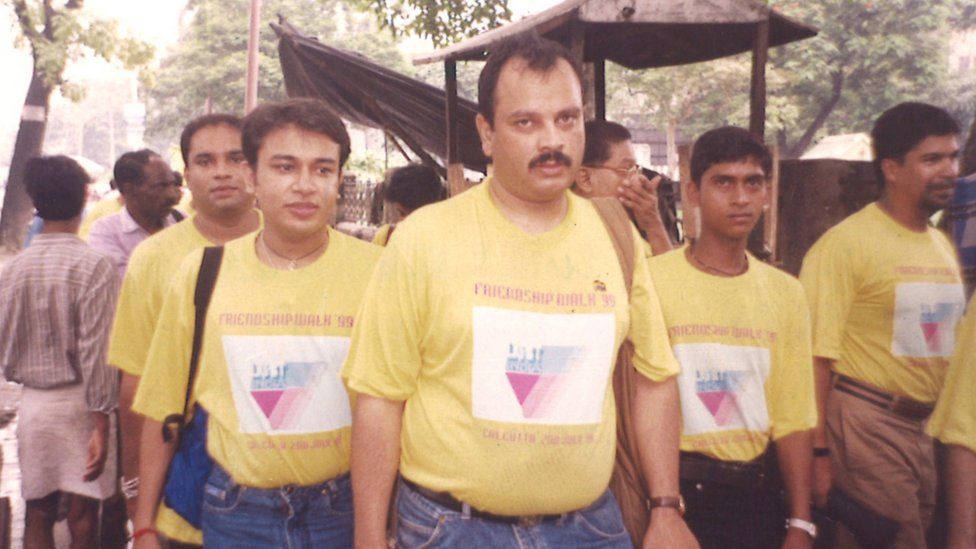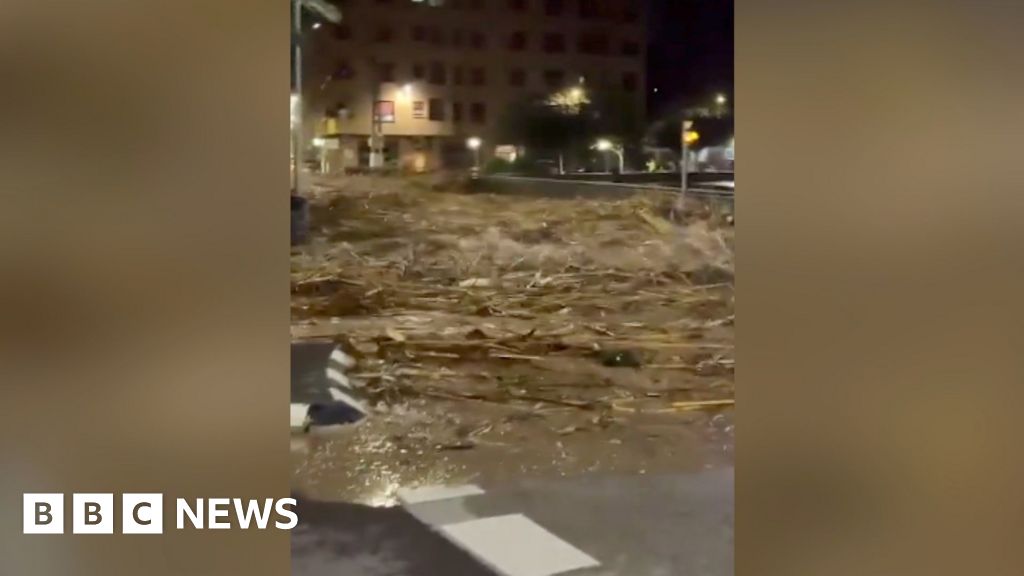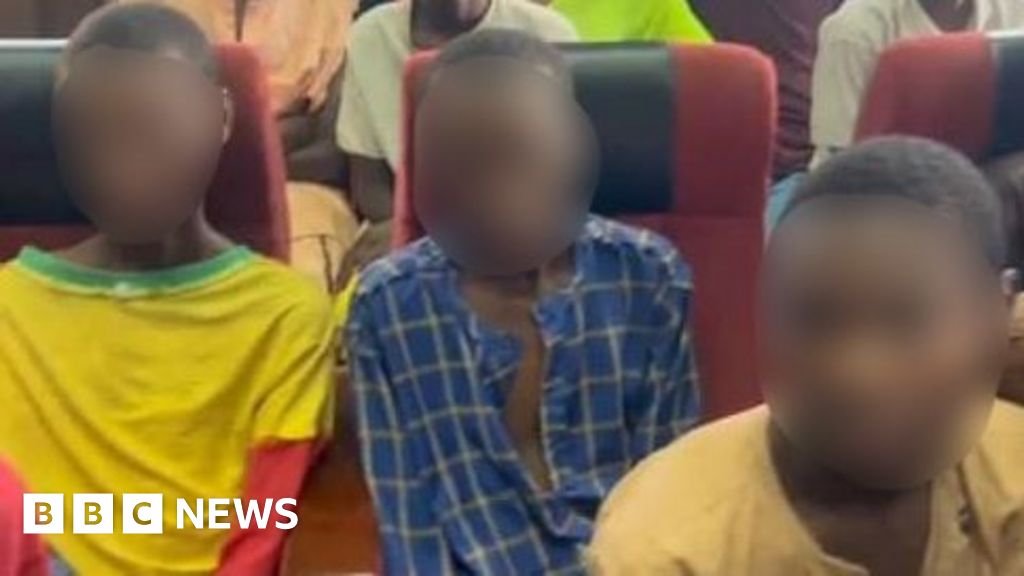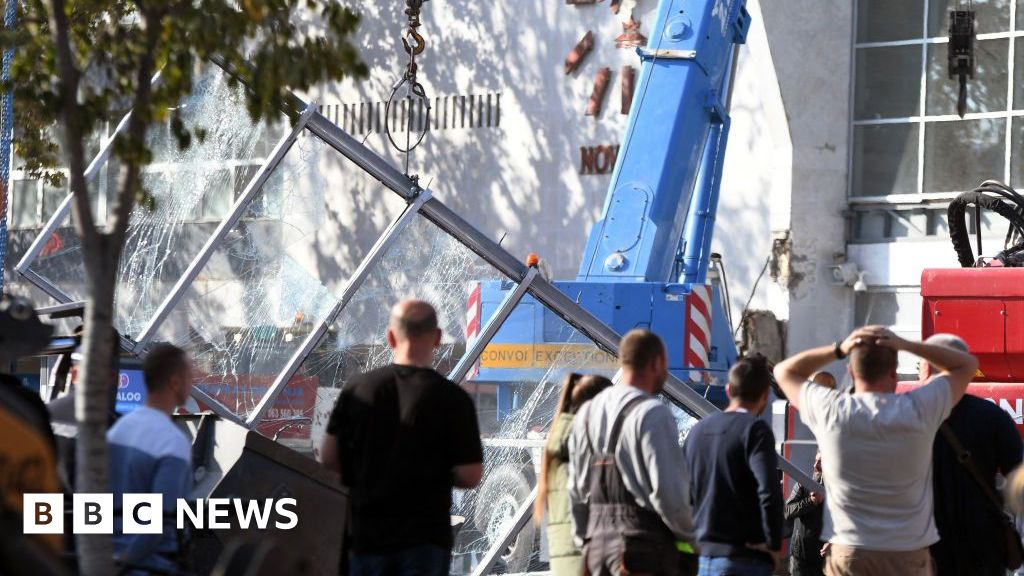ARTICLE AD BOX
 Image source, Owais Khan
Image source, Owais Khan
The event was called a Friendship Walk and was held in Kolkata city
Pride parades in India today are vibrant affairs, where thousands gather to express themselves and offer support to the queer community. But things were very different in 1999, when the country's first Pride walk was organised in the eastern state of West Bengal. Journalist Sandip Roy revisits the trailblazing event.
On 2 July 1999, Pawan Dhall, a queer rights activist in Kolkata city, was among the 15 intrepid marchers to participate in what was later called the first Pride walk in India.
The event was timed to coincide with global celebrations marking 30 years of the Stonewall riots in New York which sparked the LGBTQ+ movement in the US.
But July is monsoon season in India, and the 15 marchers in their custom-made bright yellow t-shirts with pink triangles were soon soaked to the bone.
"It was more of a wade than a walk," Mr Dhall says.
The marchers also did not call the event a Pride march, instead going for the more innocuous-sounding "Friendship Walk" to avoid trouble.
In 1999, homosexuality was still criminalised in the country - a Victorian relic in the Indian Penal Code - and gay life was largely underground, though a few groups dedicated to supporting the community had formed in some cities.
Queer Indians found each other through mailing lists and Yahoo groups, and the idea of a Pride march surfaced there.
On 28 April 1999, Owais Khan, a convener of the LGBTQ+ India group, suggested doing something to celebrate "Gay Liberation Day" in New York - he called it "a small pada-yatra (procession) complete with pink triangles and rainbow-coloured peacocks".
Mr Khan said he was inspired by the Pride parades in cities like New York, but also by Mahatma Gandhi's famous Salt March during India's independence struggle.
Image source, Getty Images
Image caption,Thousands attend colourful Pride marches in India every year
But not everyone shared his enthusiasm. Rafiquel Haque Dowjah, a communications consultant and one of the 15 marchers, says some members of the community called Mr Dowjah an "attention seeker" and accused him of "copying a western idea".
Even Mr Dhall remembers being less than enthusiastic. "Another procession in Kolkata! I've been part of many processions and it's quite a pain," he thought to himself, he said.
But Mr Khan was determined to make the march happen. In the book Gulabi Baghi, an anthology of essays on the LGBTQ+ movement in India, Mr Khan recalls telling his peers: "Friends, The Walk is happening even if I am the only walker."
But it wasn't easy for a motley group of volunteers to pull off a march with practically no money.
Mr Khan says he woke up on the day of the walk with "a stomach full of fluttering butterflies" and wondered if anyone would turn up.
Eventually, 15 people participated, seven from Kolkata and the rest from Delhi and Mumbai and from smaller towns such as Bongaon and Kurseong in West Bengal.
An elderly woman, who was passing by, asked one of the participants why they were marching. He said they were demanding their rights. The woman shook her head and wondered aloud why the state had nothing better to do than "police people's private lives".
Others were more bemused. After their initial walk the marchers split into two groups and visited non-governmental organisations and the state's Human Rights Commission to distribute information brochures.
"We met a junior official there who was completely bewildered by the issue," says Mr Dhall.
At a press meeting later in the afternoon, reporters complained that they had no pictures of the parade.
So the group re-staged their historic "walk" for the cameras. "That's what eventually appeared in the newspapers," Mr Dhall laughs.
Image source, Owais Khan
Image caption,Organising the 1999 walk was a challenge and only 15 people showed up
Not all of the participants had come out to friends and family at the time. "My relatives had no idea where I disappeared on the day of the walk," says Navarun Gupta who lived in Atlanta but was visiting relatives in Kolkata that day.
Aditya Mohnot, now a fashion designer in Kolkata, said he joined the walk because his parents were not in town that day. But he did not realise pictures from the march would appear in newspapers the next day, with headlines like "15 friends walk with gay abandon".
At first, Mr Dhall said the walk felt like "an unnoticeable ripple" as the participants went back to their lives.
But the ripples were noticed - and they sparked a flurry of reactions.
Mr Mohnot said his friend's parents read about him in the newspaper. Luckily they were "surprised but proud".
In Mr Dowjah's case, his neighbour cut off all ties with him after she found out about the march.
"It was very hurtful and painful. Her family had known me since I was born," he said.
Mr Khan, however, remained hopeful. "Fifteen was a modest number but at least one needed two hands to count them," he said.
Soon, reactions began to pour from abroad as well.
"I am moved to tears," said Faisal Alam, founder of the queer Muslim support group Al Fatiha in the US, in a letter to the organisers.
"For a young queer person like me, the march showed that we could struggle for a better and more queer-friendly India visibly, proudly and publicly," said Parmesh Shahani, author of Queeristan - LGBTQ Inclusion in the Workplace.
"It showed us literally, and not just abstractly, that queer alternatives are possible in our country."
In 2019, Mr Dhall and Mr Khan recreated the Friendship Walk to mark its 20th anniversary. But this time, they felt like they were marching in a different country.
Homosexuality had just been decriminalised in India in 2018. In a few years, the Supreme Court would be hearing arguments to legalise same-sex marriages. Transgender activism had led to a landmark (though controversial) transgender bill. And a panel they organised saw participation from several small cities and towns in India.
Then again, not everything had changed. "The 20th anniversary walk was also quite a washout because of the rains," Mr Dhall says.
There was a happier postscript though. Years after she stopped talking to him, Mr Dowjah's neighbour knocked on his door and finally apologised for her behaviour.
Mr Dowjah says it just showed one had to keep doing the right thing. "People will come around, if not today, then in 20 years."
Sandip Roy is an author and journalist based in Kolkata city.
BBC News India is now on YouTube. Click here to subscribe and watch our documentaries, explainers and features.

 1 year ago
31
1 year ago
31








 English (US)
English (US)